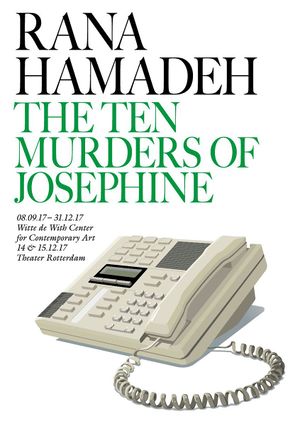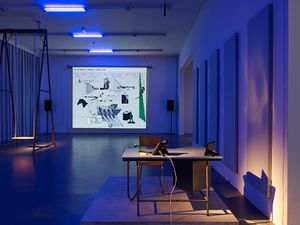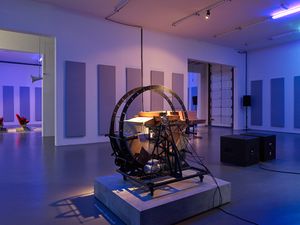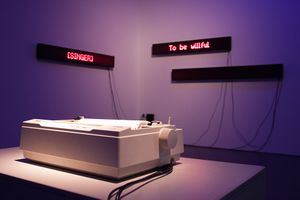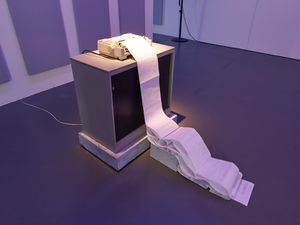Rana Hamadeh - The Ten Murders of Josephine
2017
- Location: Witte de With Center for Contemporary Art, Rotterdam
- Author: Rana Hamadeh
- Network Design & consultancy: André Castro
- Sound Design: Jorg Schellekens
- Curators: Defne Ayas, Natasha Hoare
Description
The Ten Murders of Josephine is an Opera project by artist Rana Hamadeh structured through several evolving iterations. Preceded by a study group, the exhibition will be followed by a theatrical production premiering at Theater Rotterdam, Schouwburg (14-15 December, 2017), a publication, and a film.
Conceived as both the spatial realization of Hamadeh’s libretto, and the ‘factory’ and ‘assembly line’ for the Opera, the exhibition can be approached as a breathing, morphing sonic encampment at Witte de With. It is constituted of a system of interplaying sonic zones where several characters or events manifest as a dramaturgy across a forty-minute looping score. The spatial realization of the Opera’s initial score is continuously interrupted by the live processing of the audience’s speech; the live interpretations of machines; the daily migrations and displacements of objects across different rooms carried out by Witte de With’s staff-turned-actors; performers’ public rehearsal; and the ongoing production of props and scenographic objects for the consequent theatrical production, turning Witte de With itself into part of the Opera’s materiality.Drawing broadly on historian Saidiya Hartman and poets NourbeSe Philip and Fred Moten’s writings, Hamadeh approaches the notion of the ‘testimonial’ as a violence not attended to, which materializes – phonically – as a monument to absent speech.
Operatic in both scale and form, the project comes at a pivotal moment in Hamadeh’s diverse and urgent practice, coalescing multiple strands of theoretical research in the largest project of her career to date. Loosely based on Kafka’s mouse songstress Josephine, it genuinely engenders new modalities of readership and spectatorship, and tests performative dynamics of exhibition making.[1]
Network
The network setup for the installation something like this
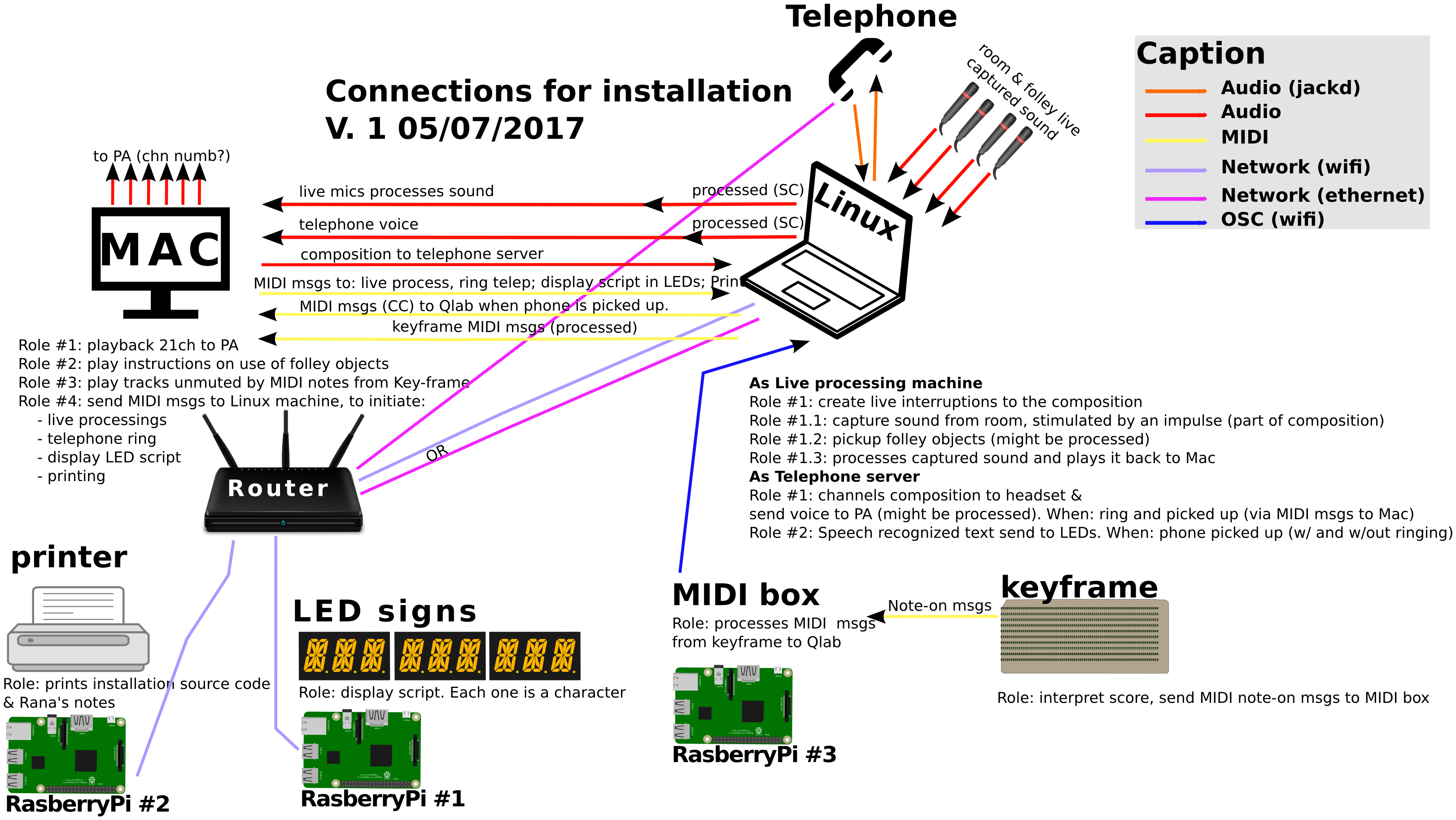
Confused? Well that it is because it is sort of confusing, and also outdated, but it give an idea of what went on under the hood. In a nutshell the network functioned as listener to the MIDI messages coming from the sound composition that was the center stage of the installation. When a MIDI message would arrive, something was supposed to happen at that specific moment, namely:
- change the corridor lights, to the room where the composition is being played in
- capture, process and playback the sound of a room, in that same room
- make printer print
- ring the telephone. if the telephone is picked up:
- route the composition to its ear-piece
- the voice of the receiver onto the PA
The software used to run the installation, comprises: Debian, Minibian, Asterisk, Jackd, SuperCollider, Python (with libraries: mido, pyOSC, RPi.GPIO)
Press
De Volkskrant. 2017. Bronwasser, Sacha. ‘Laat Je Verbijsteren Door Rana Hamadeh'. 20 October 2017. https://www.volkskrant.nl/beeldende-kunst/laat-je-verbijsteren-door-rana-hamadeh~a4522578/.
Frieze.com. 2017. Khadivi, Jesi. ‘Rana Hamadeh’. 18 October 2017. https://frieze.com/article/rana-hamadeh.
Mousse Magazine. 2017. ‘The Testimonial Subject: Rana Hamadeh’, 4 October 2017. http://moussemagazine.it/rana-hamadeh-carolina-rito-2017/.
References
Media Design for Art-Works

